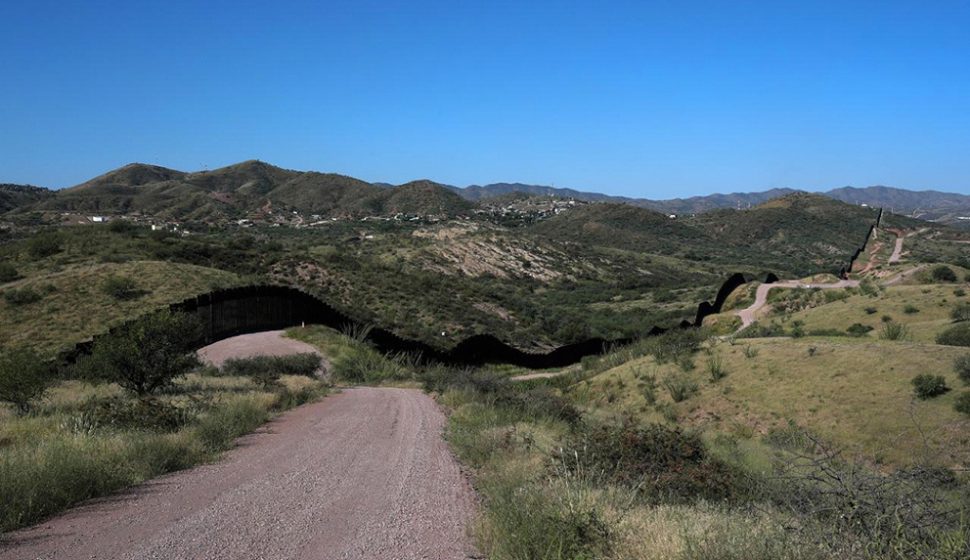WASHINGTON/PIJIJIAPAN, Mexico, (Reuters) – President Donald Trump’s administration may send up to 1,000 active-duty troops to the U.S.-Mexico border, officials said yesterday, as Trump hammered away at the issue of illegal immigration ahead of congressional elections.
Trump’s threat was sparked by the advance of a caravan of Central American migrants trekking through Mexico and headed toward the United States.
“I am bringing out the military for this National Emergency. They will be stopped!” Trump wrote on Twitter.
U.S. Homeland Security Secretary Kirstjen Nielsen said in an interview with the Fox News Channel that her department had asked the Pentagon for help to bolster its capabilities, including for “some air support … some logistics, planning, vehicle barriers, engineering.”
She said the requested support was meant to help better protect the Department of Homeland Security’s (DHS) agents and ports of entry. How to meet the request is up to the Department of Defense, Nielsen added.
The preliminary DHS request could require deploying between 800 and 1,000 active-duty troops, two U.S. officials said, speaking on condition of anonymity.
The U.S. military is prohibited from carrying out civilian law enforcement on American soil unless specifically authorized by Congress.
Although Trump’s language has suggested the military might be directly involved in preventing the migrants from entering the United States, one official said the troops would engage only in logistics and infrastructure services, like setting up tents, and not law enforcement activities.
There are currently 2,100 National Guardsmen along the border, but the DHS request could lead to the first large-scale deployment of active-duty U.S. military forces to support the border protection mission under Trump.
The Pentagon said it was working with DHS to “determine the specifics of our support” to the Customs and Border Protection agency, part of DHS.
Trump and his fellow Republicans have sought to make the caravan and immigration major issues ahead of the Nov. 6 midterm congressional elections, in which the president’s party is trying to maintain control of the House of Representatives and the Senate.
Fleeing violence, poverty and government corruption in their home countries, the caravan of migrants on Thursday continued its slow trek toward the distant U.S. border.
Men, women and children set off at dawn from the southern Mexican town of Mapastepec, in the state of Chiapas. A local official said 5,300 migrants had assembled in the town on Wednesday night.
As the sun began to blaze, they marched 30 miles (48 km) to the town of Pijijiapan, where they rested on blankets and tarps in the main park.
A group of Mexican police, who said the responsibility for deporting migrants rests with immigration officials, tried to flag down rides for some.
Meanwhile, further south in Guatemala, a second caravan of more than a thousand people that had formed on Monday and since broken into smaller groups also moved northward.
Lucrecia Oliva, a worker at a migrant shelter in Guatemala’s capital, said 400 migrants arrived on Wednesday in small clusters. On Thursday afternoon, around 60 Honduran migrants sat in the street outside, resting and eating donated food.
“To those in the Caravan, turnaround, we are not letting people into the United States illegally. Go back to your Country and if you want, apply for citizenship like millions of others are doing!” Trump tweeted on Thursday.
“We feel like he’s not human,” said Carlos Fernandez, a 39-year-old bricklayer, speaking by phone from the Guatemala-Mexico border after traveling since last Friday from the crime-wracked city of San Pedro Sula in Honduras.
“If someone migrates to the United States, it’s to work, and working is not a crime,” he said.
Trump pledged during the 2016 presidential race to build a wall along the southern U.S. border with Mexico. But the funding for his signature campaign promise has been slow to materialize, even though his party controls the U.S. Congress.
In April, frustrated by lack of progress on the wall, Trump ordered the National Guard to help secure the border.
Adam Isacson, an official at the Washington Office on Latin America, a group that advocates for migrant rights, expressed misgivings about the potential deployment.
“Even if it’s a short-term deployment, it’s another step toward militarization of our border,” Isacson said, adding that 40 percent of people being apprehended at the border were children and families.






